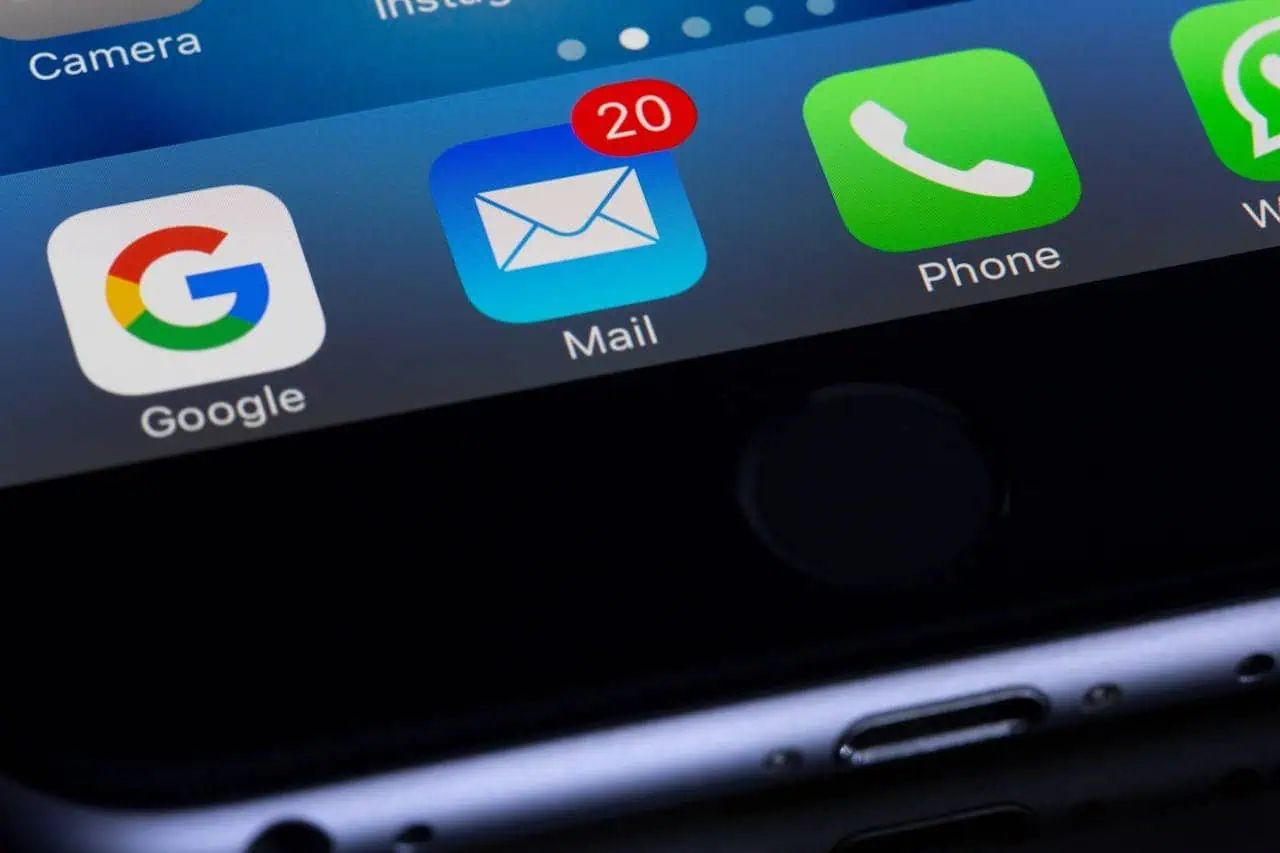Email marketing is a powerful and effective method of digital marketing. It is regarded as a form of ‘direct marketing’ because it entails direct communication with the customer.
The very first email was sent way back in 1971, but by the 1990s emails were commonplace and many people used email as an efficient means of communicating work correspondence. At the same time, people were increasingly using emails to communicate personal messages to friends and loved ones all over the world.
In today’s world, almost everyone has an email address, which is why businesses are keenly aware of how valuable email marketing is and how important it is, therefore, to have an email lead generation strategy. Between 2014 and 2019, the share of sales attributed to email marketing fluctuated between 21% and 24%. This goes to show just how powerful an effective email campaign can be.
We are going to take a look at email lead generation and some of the best methods to guarantee successful email marketing campaigns.
How to generate leads through email marketing
For successful lead generation, email marketing should be targeted at a specific audience and offer something that solves a problem particular to that demographic. The emails need to be concise, personal, and expertly timed to have the best possible response.
Email marketing is a great way to generate leads and increase sales because it is cheaper and more direct than many other marketing methods. But it is also important to not overload your leads with emails as this may put them off from opening future emails from your business.
So let’s jump in and take a look at what exactly lead generation is.
What is lead generation?
Lead generation is a marketing term that refers to the initiation of customer interest for a particular product or service.
Email leads are the people who share their email and other details, such as their name and further contact information, with your business. Once you have their emails, you can market to them via their email and make them offers that are only for this select band of customers.
Lead generation is crucial in the development and growth of any eCommerce business. Email marketing is one of the most effective and efficient methods of generating leads. It is a fast and (almost) cost-free method of boosting sales, widening your market, and nurturing a good relationship with current customers.
If you are having difficulty in creating a lead generation strategy then have no fear! We are to help. You may also consider joining an online sales community where you can find help and advice on how to get the most from your leads.
So let’s take a look at some of the best methods of generating leads through email marketing.

Methods to generate leads through email marketing
Here we will take a look at some sure-fire ways to generate leads with every email marketing campaign you initiate.
Find your target audience
Identifying your target audience is the first, and one of the most important steps to generating leads through email marketing.
Knowing your target audience is key to having successful marketing campaigns that yield greater sales and generate further leads by encouraging subscriptions or sign-ups.
Your target audience is not simply a demographic based on age and gender, there is a multitude of factors to incorporate to ensure your email marketing campaigns are aimed at exactly the right people.
To pinpoint your target audience, you want to consider questions such as: what kind of jobs do they have? How much disposable income are they likely to have? Where do they live? What problems are they likely to have that your product or service can help to solve? How do they spend their free time? How do they engage with the internet, digital communication, and information access?
Of course, your target audience isn’t all going to fit neatly under one banner, but you want to understand the persona of your ideal buyer and tailor your marketing strategy around this person.
Your target audience may also vary from email to email depending on the behaviour of your leads. Some may be more engaged with certain products or services than others, so it is also a good idea to track the behaviour of your leads so you know what they like. This is sometimes known as ‘lead scoring’. With lead scoring, you can rate your customers’ responses to certain emails and tailor offers for them based on those responses.
Make them an offer they cannot refuse
Once you have identified your target audience, their lifestyle, and any problems (or ‘pain points‘, as they are known) they are likely to have, you going to want to come up with a truly irresistible offer for them to ensure that they sign up for what you are offering.
This is known as a ‘lead magnet’. The lead magnet has to offer an ideal solution to your target market’s pain point. It has to come with an offer or a guarantee that they couldn’t find anywhere else. So, present the problem you know they are likely to have, outline your solution and make sure they know all the benefits of choosing to opt-in.
Create catchy subject lines
The subject line is crucial to the success of the email as it is the piece of copy that will lead your subscribers or potential subscribers to open and read the email.
Your subject line should therefore aim to either engage and inspire your audience’s curiosity or it should have an urgency to it that alerts their attention. You may also want to put your offer directly in the subject line so the reader knows exactly what you are offering from the get-go.
Whatever you choose to do, keep the subject lines simple and concise and remove any filler words that are unnecessary.
Keep emails concise
It is a well-known fact of marketing that clean and concise content is crucial to ensure that readers, viewers, listeners, etc., do not switch off. Once someone has switched off, it is near impossible to get them to switch back on again.
For this reason, it is vital that you keep your emails as concise as possible. Structure your emails around a few points such as:
- Greeting and passing on any thanks or well wishes that are necessary.
- Outline the problem or pain point.
- Back up the pain point with facts.
- Suggest your product or service as a solution.
- Detail your product.
- Highlight the call-to-action.
- Round off.
Each point should be captured in one to three sentences to make sure you keep people engaged and likely to finish reading the email.
How to nail your call-to-action
 The call-to-action is the point at which the reader moves from a passive email recipient to an active customer who is engaged with your business.
The call-to-action is the point at which the reader moves from a passive email recipient to an active customer who is engaged with your business.
Your email needs a clear call-to-action to generate leads. The action itself will vary depending on the purpose of the email. You may ask them to sign a petition, set up a monthly payment, buy a product on a one-off deal, sign an opt-in form, etc. Whatever it is, the demands of the call-to-action need to be clear and compelling.
When writing your call-to-action you should use action phrases that have a sense of urgency. For example, ‘Sign Up Today’ rather than ‘Try Signing Up Today’. The first example is a command which initiates an action, whereas the second has less urgency and is more passive.
Try to keep the phrases you use to just two or three words if you can, four or five at the very most.
Personalise your emails
A great way to keep customers engaged with your business and with your campaigns is to personalise your correspondence with them. This makes them feel recognised and valued as a customer and will make them more likely to respond positively and proactively to any campaign directed at them.
Personalisation can be as simple as using their name, but it can also be more tailored such as thanking them for engaging with previous marketing campaigns, or for being subscribed for a certain amount of time. You can even write to them on their birthday with special birthday offers.
All of these methods add a personal and friendly touch to your communications which is always going to go down well with your leads.
Choose your moments
The day, time and time of year you send your emails out is crucial to the success of the campaign. Catching your readers at just the right hour can be the difference between a successful email marketing campaign and a flop.
Every business will differ as to when the best time to send emails is. Many will tell you that either Tuesday or Thursday are the best days, though this too will vary from business to business.
Ultimately, every business is unique, as is their clientele. You should study the response you get at different times of day and on different days of the week to notice any patterns that start to develop. Then, based on the unique behaviour patterns of your leads, be sure to send your emails out at the most effective times.
Don’t overload your customers
When you write and send emails to your customers, make sure that you only target and contact them with campaigns they are likely to engage with. If you overload them with new offers and deals on a regular basis they will soon tire of your communications and stop engaging with them.
So be sure to only send out valuable content that is likely to get a response based on your research.
Wrap up
Lead generation is vital for business development and broadening a business’ market. Email marketing, when done well, is a great way of generating leads and boosting particular campaigns.
Follow our methods to ensure your lead generation strategy is as effective as it can be and that your email marketing is on point and successful.

